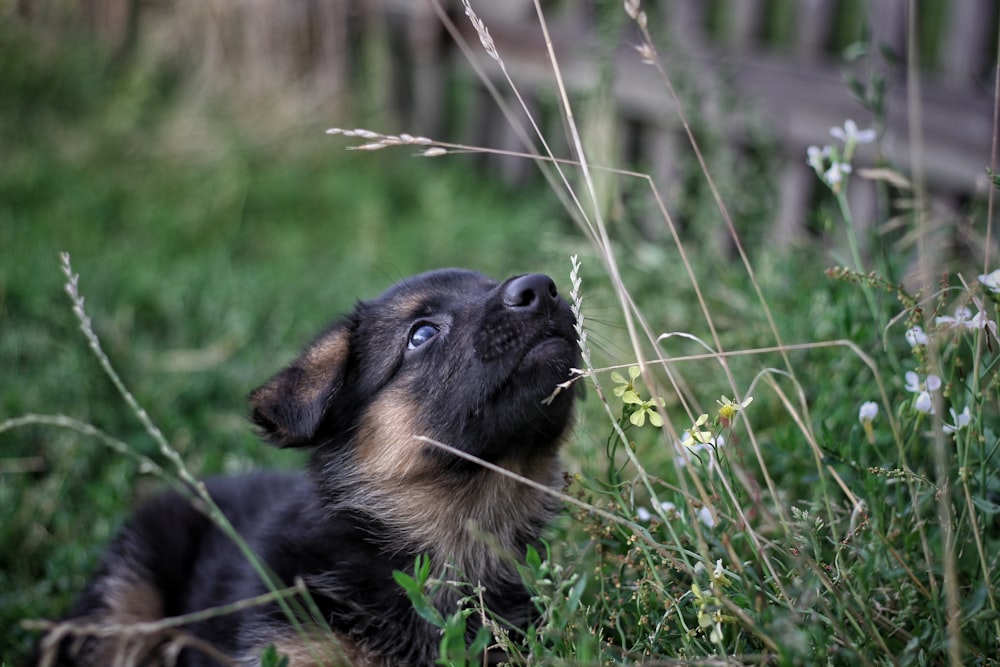You did it: you brought home a brand new puppy. This adorable ball of fluff will be with you for the next 10 to 15 years, and the decisions you make now will determine what kind of puppy you raise and what kind of dog will be your companion. No pressure, right? The amount of training you need to do with your new canine companion can seem incredibly overwhelming, but it doesn’t have to be. In this article, we’ve outlined a few puppy training tips to get you started with raising your new best friend.
The Best Tips For Training a Puppy
First, let’s talk about just a few puppy training tips to get you started.
Keep Training Sessions Short, Simple and Fun
When you first bring home a puppy, they may be as young as 8 weeks of age. 2-month-old puppies are capable of learning, but their attention spans are quite short. Keep your training sessions short and engaging, no more than 5 minutes. If your puppy’s attention is clearly starting to wander, quickly end on a positive note. Try to work on only one behavior per session to keeps things simple.
Make sure you have a high-value treat for training sets; something the puppy really likes, and make the treats variable so your puppy doens’t get bored. Train your puppy in a familiar area with little to no distractions. You can progress to traiing in more complex settings or outside later on. Keep a lot of fun toys available for breaks between training sets and also as an alternative reward to treats.

Prioritize Simple Commands
Part of keeping training simple, using simple commands can help your puppy learn behaviors quicker. Choose a clear, concise command for a behavior, such as “sit,” for when you want them to sit. When choosing command words, make sure they are words that you won’t say in situations that might confuse your puppy.
Be Consistent
If you follow no other puppy training tips, follow this one: be consistent. Consistency is the key to training any animal, at any age. Try to train your puppy the same way each day. Use the same command word for a behavior uniformly. For example, if “off” is the word you use to keep your puppy from jumping on people, don’t start saying “down” instead. This kind of confusion slows your puppy’s learning curve as they become frustrated and try to figure out what this new word means. Another example is to be consistent with house rules. If you establish Fido is not allowed on the furniture, make sure this rule is followed uniformly at all times and by all members of the household.

Reward Good Behavior
Not all puppy training occurs during a training session. In fact, most of it doesn’t. Pay attention to your puppy when they are doing things you like: eliminating outside, playing by themselves, sitting or lying quietly, etc, and verbally praise them. Verbal or even physical praise tells your puppy that whatever they are doing, you like, and reinforces the behavior. When you reinforce a puppy’s behavior, you increase the likelihood that this behavior will reoccur.

Nip Problems In the Bud
Problem behaviors like jumping and nipping need to be addressed as sooon as possible. While a 10-pound puppy jumping up on you when they are excited to see you is adorable, it will be less so when that puppy weighs 100 pounds. If you aren’t sure whether or not a behavior is problematic, imagine your puppy doing the same thing as a grown dog. Chances are, you’re going to want to stop the negative behavior now. Consistent correction will show your puppy which behaviors are unacceptable.
Puppy Training Tips For:
Crate Training
Crate training is an essential tool for most dogs and their owners. It helps with potty training your puppy and also gives them a “safe space” that is all their own. Crating your puppy when you aren’t home can also help keep them from getting themselves into trouble while you are away.
- Choose the right size rate. Your puppy should have enough room to stand up and turn around completely. Consider how much your puppy will grow when choosing a crate size.
- Have play sessions with your puppy tha involve the crate. Make it a fun and safe place.
- Cover your crate with a blanket to give it a cave-like feel that will satisfy your puppy’s instinct to hide in a den.
- Give your puppy puzzle feeders, bones, or interactive toys while in the crate to prevent boredom.
Read more about how to crate train your puppy here.

Potty Training
Potty training is best done in conjunction with crate training. Here are a few puppy training tips tips for potty training your new pooch:
- When you take your puppy out of the crate, head directly outside to let them eliminate.
- Designate a particular spot outside for them to eliminate so they know what is expected of them.
- Add a command word that lets your puppy know it’s time to do their business such as “go potty.”
- Take your puppy out to potty after meals, play sessions, or waking up from a nap.
- Establish a set routine for meals, play sessions, and potty breaks.
- Supervise at all times and never punish your puppy for an accident.
Read more about potty training your puppy here.

A Few More Puppy Training Tips To Further Your Research
Explore some of our other training tips.
Training tools: learn about training tools that can assist you in teaching your new puppy.
Barking: can you train a dog not to park? You sure can!
Dog training tricks: tricks and behaviors to teach your dog once they’ve mastered the basics.
